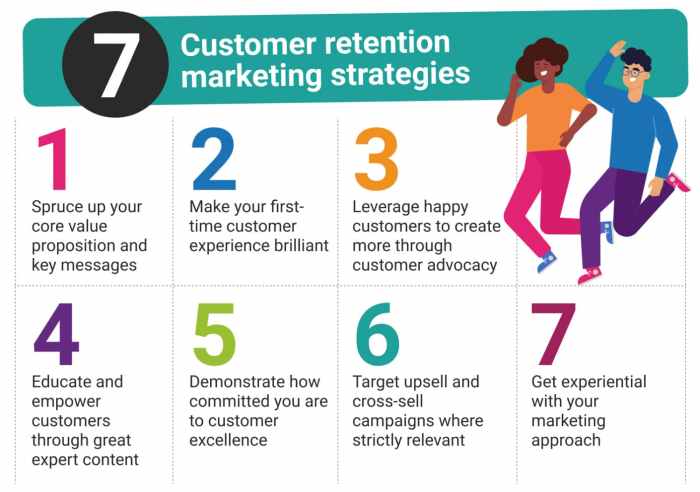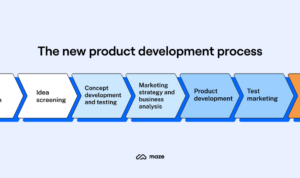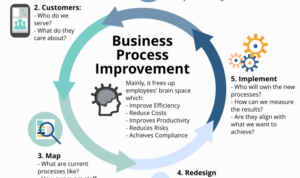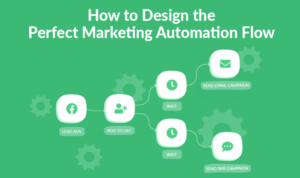Building a Customer Retention Strategy sets the stage for this enthralling narrative, offering readers a glimpse into a story that is rich in detail with american high school hip style and brimming with originality from the outset.
Crafting a strategy to keep customers coming back for more is not just a trend, it’s a necessity in today’s competitive market. Dive deep into the world of customer retention and discover the secrets to long-lasting customer relationships.
Overview of Customer Retention Strategy

A customer retention strategy refers to the techniques and actions implemented by a business to retain existing customers and encourage repeat business. It involves building strong relationships with customers to ensure their long-term loyalty and satisfaction.
Having a solid customer retention strategy is crucial for businesses as it can lead to increased customer lifetime value, reduced churn rate, and ultimately, higher profitability. By focusing on retaining customers, businesses can save on acquisition costs and benefit from the positive word-of-mouth and referrals generated by satisfied customers.
Examples of Successful Companies with Effective Customer Retention Strategies
- Amazon: Amazon excels in customer retention through its Prime membership program, offering perks like free shipping, exclusive deals, and streaming services to keep customers engaged and loyal.
- Apple: Apple’s focus on product quality, customer service, and continuous innovation has created a loyal customer base that keeps coming back for new releases and upgrades.
- Starbucks: Starbucks uses its rewards program to incentivize repeat purchases and customer engagement, creating a community of loyal coffee enthusiasts who frequent their stores regularly.
Understanding Customer Behavior
Understanding customer behavior is essential when creating a successful customer retention strategy. By analyzing how customers interact with your products or services, you can tailor your approach to meet their needs and keep them coming back for more.
Tools and Methods for Analyzing Customer Behavior, Building a Customer Retention Strategy
- Customer Surveys: Sending out surveys to gather feedback on customer preferences and satisfaction levels.
- Website Analytics: Tracking user behavior on your website to understand which pages are most popular and where customers are dropping off.
- Social Media Monitoring: Keeping an eye on social media mentions and interactions to gauge customer sentiment and engagement.
- Customer Segmentation: Dividing customers into groups based on demographics, behavior, or preferences to target specific needs.
Role of Data Analytics in Understanding Customer Behavior
Data analytics plays a crucial role in understanding customer behavior by providing insights into trends, patterns, and preferences. By analyzing data collected from various sources, businesses can make informed decisions on how to engage with customers effectively. Utilizing tools like customer relationship management (CRM) systems and predictive analytics can help identify opportunities for improving customer retention and loyalty.
Identifying Key Customer Segments: Building A Customer Retention Strategy

Identifying key customer segments is crucial for a targeted retention strategy as it allows businesses to tailor their approach to meet the specific needs and preferences of different groups of customers. By understanding the characteristics and behaviors of each segment, companies can create personalized retention strategies that are more effective in keeping customers engaged and loyal.
Segmenting Customers
Segmenting customers can be done based on various factors such as behavior, demographics, purchasing habits, or psychographics. By analyzing these different aspects, businesses can group customers into segments that share similar characteristics and needs. This segmentation allows for more targeted and personalized retention strategies to be implemented.
- Behavioral Segmentation: This involves dividing customers based on their purchasing behavior, such as frequency of purchases, average order value, or product preferences. By understanding how customers interact with the brand, businesses can create retention strategies that cater to their specific needs.
- Demographic Segmentation: This involves categorizing customers based on demographic factors like age, gender, income, or location. This information can help businesses create personalized retention strategies that resonate with different demographic groups.
- Psychographic Segmentation: This involves understanding customers’ lifestyles, values, interests, and attitudes. By segmenting customers based on psychographics, businesses can create retention strategies that appeal to customers on a deeper emotional level.
The benefits of personalized retention strategies for different customer segments are immense. By tailoring the approach to meet the specific needs and preferences of each segment, businesses can increase customer satisfaction, loyalty, and ultimately, retention rates.
Implementing Engagement Strategies
In order to retain customers, businesses must implement effective engagement strategies that keep customers interested and connected. One key aspect of successful engagement is personalized communication channels that cater to the individual needs and preferences of each customer.
Importance of Personalized Communication Channels
Personalized communication channels are crucial for customer engagement as they create a more intimate and tailored experience for each customer. By understanding the unique preferences and behaviors of individual customers, businesses can create targeted communication strategies that resonate with their audience.
- Utilizing customer data to personalize emails, messages, and promotions based on past purchases or interactions.
- Implementing loyalty programs that offer personalized rewards and benefits to customers based on their preferences and spending habits.
- Creating personalized product recommendations and offers that cater to the specific interests and needs of each customer.
Personalized communication channels not only increase customer engagement but also foster loyalty and long-term relationships with customers.
Successful Customer Engagement Tactics
Businesses can learn from successful customer engagement tactics used by industry leaders to enhance their own strategies and improve customer retention.
- Amazon’s personalized product recommendations based on browsing history and purchase behavior.
- Starbucks’ mobile app that allows customers to earn rewards and order ahead, creating a seamless and personalized experience.
- Sephora’s Beauty Insider program that offers personalized beauty recommendations and exclusive perks to loyal customers.
Loyalty Programs and Incentives
Loyalty programs and incentives play a crucial role in customer retention by rewarding customers for their continued support and patronage. These programs are designed to keep customers engaged, satisfied, and loyal to a brand or business.
Types of Loyalty Programs
- Points-Based Programs: Customers earn points for each purchase, which can be redeemed for discounts, free products, or other rewards.
- Tiered Loyalty Programs: Customers move up different tiers based on their level of engagement, unlocking exclusive benefits and rewards.
- Discounts and Coupons: Offering discounts or coupons to loyal customers can incentivize repeat purchases and foster brand loyalty.
Effectiveness of Loyalty Programs
- Loyalty programs have been shown to increase customer retention rates and boost overall customer lifetime value.
- By rewarding customers for their loyalty, businesses can create strong emotional connections with their customer base.
- Personalized loyalty programs tailored to individual customer preferences are more effective in driving repeat purchases and long-term loyalty.
Case Studies of Successful Loyalty Programs
| Company | Loyalty Program | Outcome |
|---|---|---|
| Starbucks | Starbucks Rewards | Increased customer engagement and higher spending among loyalty members. |
| Sephora | Beauty Insider Program | Improved customer retention and increased brand advocacy through personalized rewards. |
| Amazon | Amazon Prime | Enhanced customer loyalty, increased customer lifetime value, and higher customer satisfaction. |
Feedback and Continuous Improvement
Feedback from customers is crucial in improving retention strategies. By listening to their opinions and suggestions, businesses can identify areas for enhancement and tailor their approach to better meet customer needs.
Role of Feedback Loops
Feedback loops play a vital role in enhancing customer experience. These loops allow businesses to collect, analyze, and act on customer feedback in a continuous cycle. By closing the feedback loop effectively, companies can show customers that their input is valued and make necessary improvements to strengthen relationships.
- Implementing regular surveys and feedback forms to gather customer opinions.
- Utilizing social media platforms to monitor and respond to customer comments and reviews.
- Tracking customer interactions and behaviors to identify pain points and areas for improvement.
Companies Leveraging Customer Feedback
Many companies have successfully leveraged customer feedback for continuous improvement. For example, Starbucks uses customer feedback to introduce new menu items and improve store layouts. Amazon constantly reviews customer reviews to enhance product offerings and customer service. By actively listening to their customers, these companies have been able to stay ahead of the competition and build strong brand loyalty.





